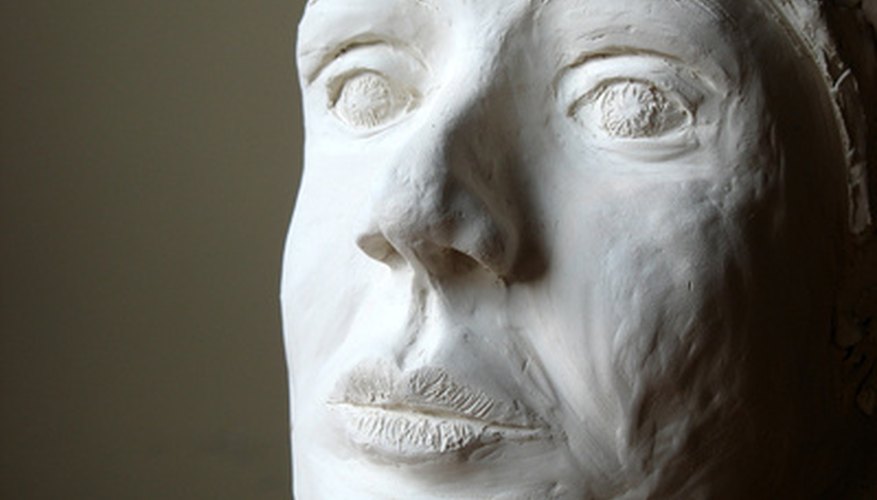Plaster of Paris is a homemade plaster craft that moulds into porous material that cannot get wet. When you have no other choice but to get your plaster of Paris near rain or snow, try weatherproofing it first. Though this might not keep it protected from heavy rain, it will help prevent wet elements from dissolving the plaster and ruining your project or cast. More than two coats of weatherproofing material might be required for optimal results.
Prepare your plaster of Paris project according to the directions.
Allow your plaster of Paris project to dry for the recommended amount of time. Wel-cote.com suggests letting the cast or mould dry for at least 24 hours before applying any other materials.
- Plaster of Paris is a homemade plaster craft that moulds into porous material that cannot get wet.
- Wel-cote.com suggests letting the cast or mould dry for at least 24 hours before applying any other materials.
Lay out the dust sheet or plastic mat and place the plaster of Paris cast in the middle. Make sure you do this outside or in a large, well-ventilated room, as some waterproofing sprays cause health problems when inhaled.
Read the directions on the waterproofing spray bottle and apply the spray to the plaster according to specifications. Don't forget to spray the bottom of your mould as well. Let the spray dry for the recommended time specified on the can.
- Lay out the dust sheet or plastic mat and place the plaster of Paris cast in the middle.
- Read the directions on the waterproofing spray bottle and apply the spray to the plaster according to specifications.
Use the paint and paint brush to decorate your cast, if desired. For added weatherproofing, use a waterproof paint instead of water-based paint. Let it dry for at least 24 hours.
Spray the waterproof spray all over the painted cast once again. If you used waterproof paint, this should give the cast three weatherproofing sealants, thus maximising plaster protection.
